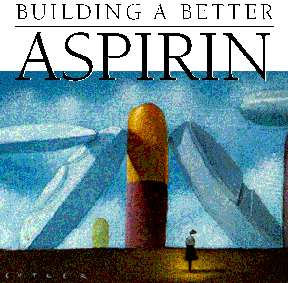 The University of Chicago Magazine October 1995
The University of Chicago Magazine October 1995

By William Burton
Photography by Matthew Gilson
The patient was a young woman of Mediterranean origin, and she was in childbirth. To ease her labor, her physician gave her a mild oral analgesic. The approach, while conservative, was effective, and absolutely state-of-the-art.
This same physician was in the practice of evaluating his female patients for infertility by placing a freshly cut clove of garlic in the womb: "If she stinks through the mouth, she will conceive; if not, she will not," say his notes on the procedure. This approach too was perfectly state-of-the-art, for the physician, Hippocrates, practiced medicine some 2,400 years ago.
Like the healers of the ancient cultures of India, Africa, and North America, he was well aware of the analgesic properties of the leaves and bark of the willow tree. And if the workings of the female reproductive system eluded him, his understanding of the willow's ability to relieve pain and reduce fever and swelling would remain unsurpassed almost to the present day. One hundred years after the development of its modern form-aspirin-this drug and its mechanism of action were almost a complete mystery to scientists.
Now aspirin's secrets have been revealed in almost unimaginable detail by U of C biochemist R. Michael Garavito and his co- workers. In the past 18 months, the team has shown, first, the precise structure of aspirin's target in the body, and then, just last summer, exactly how the drug alters its target. The pictures-drawn in color by computer, based on the diffraction of X-rays passed through pure crystals of the target molecule-represent far more than the answer to a scientific riddle. They provide at least the first half of a road map to making better drugs with fewer of the side effects, from stomach upset to life-threatening ulcers, that have bedeviled sufferers since the days of chewing willow leaves.
The project began ten years ago in Switzerland. It was suggested almost as a dare to Garavito, an American postdoctoral researcher working at the Biozentrum der Universität Basel, who had recently become one of the first scientists to crystallize a membrane-linked protein: a historic biochemical feat.
CONTINUE READING "Building a Better Aspirin"Click here for a sidebar article, "Take a pound of frozen sheep seminal vesicles, grind well..."